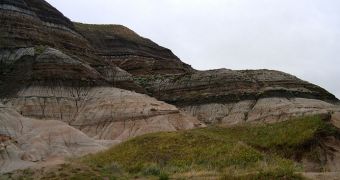Some 65 million years ago, a large meteorite or asteroid is thought to have hit our planet, causing one of the five large-scale, global extinction events that experts know of. The Cretaceous-Tertiary (K-T) dying saw the destruction of dinosaurs and other land- and ocean-based animals, but also the whipping off of roughly 90 percent of all types of plankton. These microorganisms form the basis of marine ecosystems now, as they did then, and their disappearance carried with it significant implications. According to a new study, it would appear that these consequences were a lot more devastating in the Northern Hemisphere than they were in the south, Nature News reports.
In the investigation, palaeoceanographers looked at sediment records from around the planet, which stretched back to the K-T boundary, and investigated the differences between samples collected from all of these locations. They learned that the impactor which caused the dying most likely harmed the northern parts of the globe more than the south. It is now believed that the ecosystems here took about 300,000 years to recover, whereas this happened a lot faster in the south. The researchers also argue that the north was kept under the cover of darkness for many millenia, which also contributed to this delay. Details of the work appear in the latest issue of the scientific journal Nature Geoscience.
The space rock that is thought to have hit our planet probably impacted in the Yucatan Peninsula of Mexico. Underneath it, experts have observed an area known as the Chicxulub impact crater, where the rock is thought to have hit. When the devastation occurred, more than 93 percent of calcium-based-shell nannoplankton disappeared, along with larger creatures. This had a massive impact on ecosystems, seeing how these small organisms were the primary photosynthetic producers in the world's oceans. The new investigation, led by Pennsylvania State University expert Timothy Bralower, proved that the highest extinction rate (98 percent) took place in the north, whereas the southernmost regions of the globe only experienced a 73 percent loss rate.
“There's an incredibly strong correlation between extinction rate and latitude,” the expert says. “Suppression of photosynthesis and darkness would explain the extinctions and the diversity drop,” he argues, adding that phytoplankton must have been one of the main factors that allowed for the restoration of the marine ecosystems following the K-T extinction event. Because the species recovered a lot slower in the north, so did the entire oceanic food web that relied on it. One of the things that caused so much darkness to endure over the Northern Hemisphere was the trajectory of the space rock, which is estimated to have hit from the southeast to the northwest.

 14 DAY TRIAL //
14 DAY TRIAL //